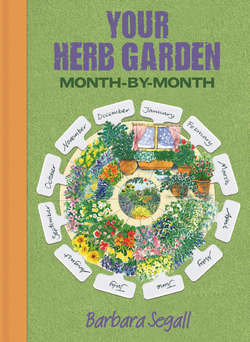Читать книгу Your Herb Garden - Barbara Segall - Страница 33
На сайте Литреса книга снята с продажи.
FEBRUARY
ОглавлениеDuring the last days of winter, decorative herb flowers such as primrose and cowslip offer delicate shape and colour to brighten the evergreen herbs at this quiet time in the herb garden. Slow though the plants may be at this season, you have a potentially busy time ahead. Activity is centred around preparing the ground for sowing and planting later in spring and planning the framework of non-plant features such as paths, seats and fencing. Weather is the main factor that determines how busy you are able to be. There is no point in attempting to work the soil in cold and frosty weather or after heavy rain. Instead, take advantage of every opportunity that mild weather provides to get out and prepare the ground. It is hard work, but healthy, strong-growing plants are the reward. Good preparation includes weeding, digging and, if necessary, enriching the soil, as well as improving its drainage. Now is also the time to start a compost heap, so that at the end of autumn you will have your own herbal compost ready to add to the soil.
If a new herb site is to be cut out of an area under lawn, wait until after the last snow or frost before you clear the turf and begin preparing the ground. As a general rule, it is more practical to start from scratch in autumn.
Once the ground is prepared, begin to put in place the permanent framework of the herb garden you have planned on paper. Paths, seats, statuary, sundials and fences are known as the hard landscape features. Your choice of these will be governed by the size of the herb garden and the cost of materials. At first these features may look stark, but in a short while the herb plants – the soft landscape features – will soften the edges. If the weather keeps you indoors, remember you can keep company with overwintering aromatic plants such as canary balm, lemon-scented eucalyptus and woolly thyme.
